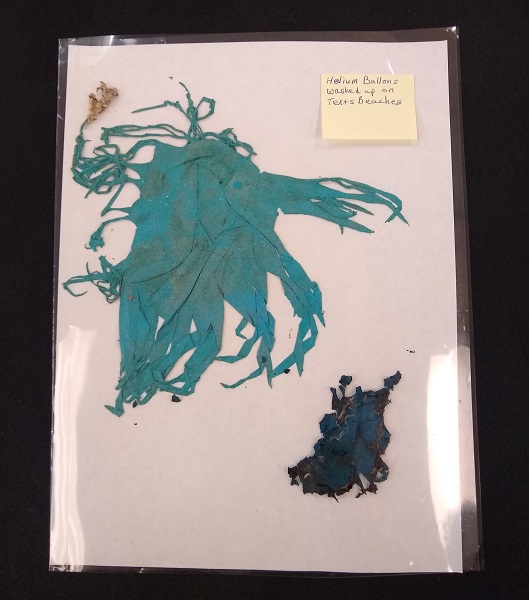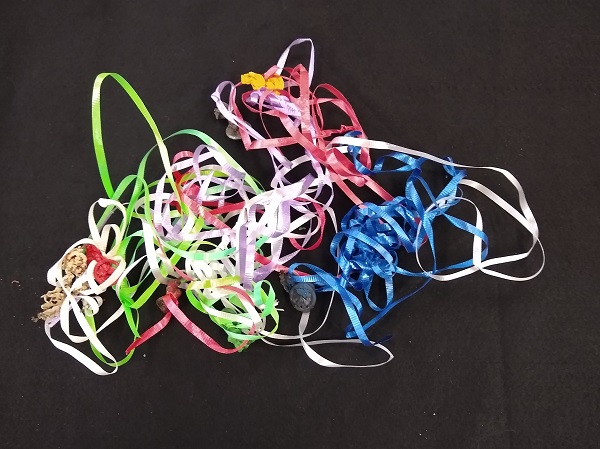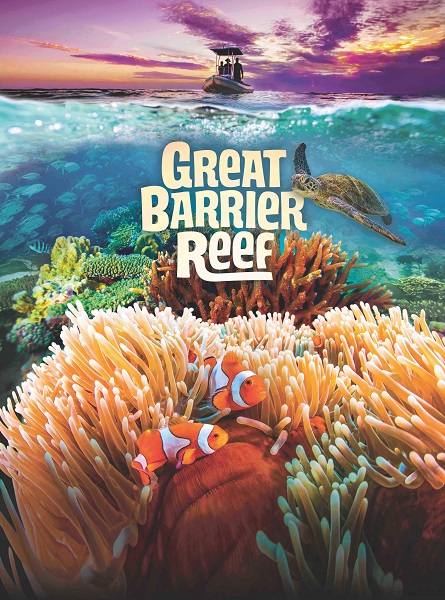Written by Tina Petway, Associate Curator of Malacology and Marine Invertebrates
While we all love to watch things fly up into the sky such as helium balloons, we do not see them when they eventually come back to earth. Unfortunately for marine and land animals they prove to be the instrument of death. Whales, porpoises, sea turtles, birds and fishes as well as land mammals, birds and reptiles are all in danger of suffering from the answer to one question. What happens to the material of which balloons are made once they fall to our oceans?

The answer is a devastating one. The balloons burst open at one spot and form a round object with dangling pieces of colorful balloon “tentacles” which resemble Jellyfishes floating on the surface of the ocean. Often the pretty ribbon handles remain attached to the end of the balloon and these also dangle down into the water attracting many animals to feed on them. The result of these thousands of balloons released for balloon release gatherings, birthdays, special events and even accompany some services of remembrance like funerals, is that hundreds of innocent animals will die because they have consumed these jellyfish-like items.
The illustrated helium balloon fragments were collected on local Texas beaches and are only a small portion of the thousands I have found on our beaches over the last 20 years. The pretty, colorful ribbons are as big a threat as the balloons. Most often the balloons reach the waters off our Texas coast because the wind currents pick up the balloons by the hundreds and move them out over the Gulf of Mexico. As the helium diffuses from the balloons, they sink into the water. The resulting “balloon” now looks like a Jellyfish and is visible to everything underwater and above, such as birds who feed on marine life.

There are some wonderful alternatives to saving these innocent animals from certain death. Putting balloons on a stick without helium is a wonderful and special way of continuing to use balloons for special events. But if helium balloons are used, why not give each participant a toothpick to pop the balloon with the accompanying slogan of “Pop a Balloon; Save a Porpoise”, or “Save a Sea Turtle”. There are many alternatives to these fun but deadly balloons and we can help you find a special way to honor a person or special event.
Our purpose is not to stop enjoying balloons, but to stop the release of hundreds of them, which will eventually kill the animals we say we love and want to protect. For not only are marine animals being killed, but also land animals, birds and reptiles are suffering the same fates. It is up to us to protect what remains of our special wildlife. We must start now before it is too late to save our natural world’s special creatures.

The Houston Museum of Natural Science is currently showing a wonderful film about Australia’s Great Barrier Reef. This film actually shows a sea turtle feeding on one of these helium balloons. It is not just our problem; but a worldwide death trap for all our wildlife. We must find new ways to celebrate the people and events that occur in our lives and at the same time celebrate the protection of the wildlife that depends on us for their survival.
Tina Petway recently sat down with Johnny and Kat for the Beyond Bones Podcast to discuss helium balloons, a near death experience and much more. Take a look:
More from Curator Tina Petway:
Fill in the Blanks with Curator of Malacology Tina Petway
From the Curator: Spikes and Spines
From our Collections: You Should See Me in a Crown – The Queen Conch






